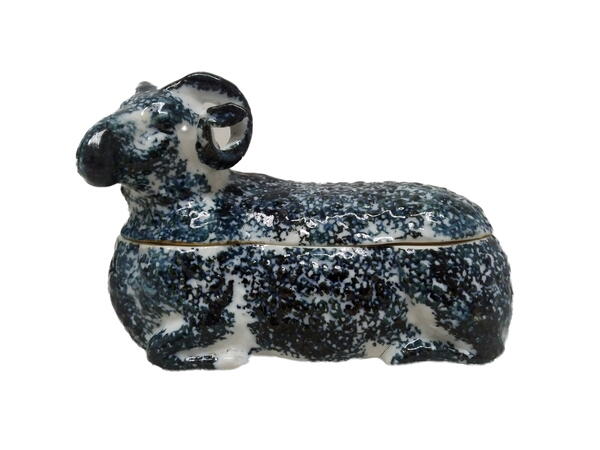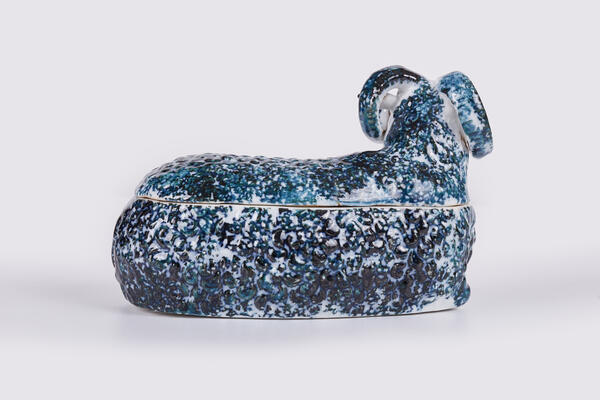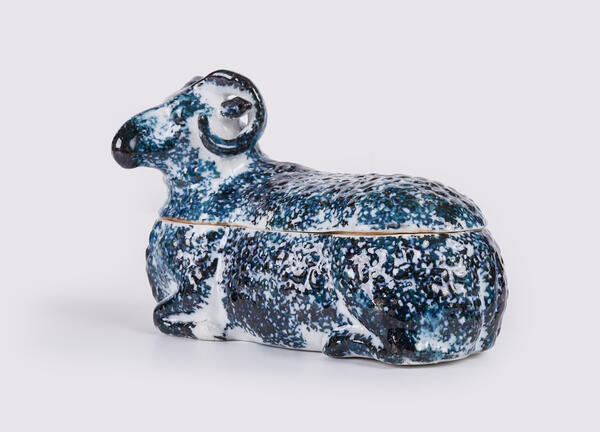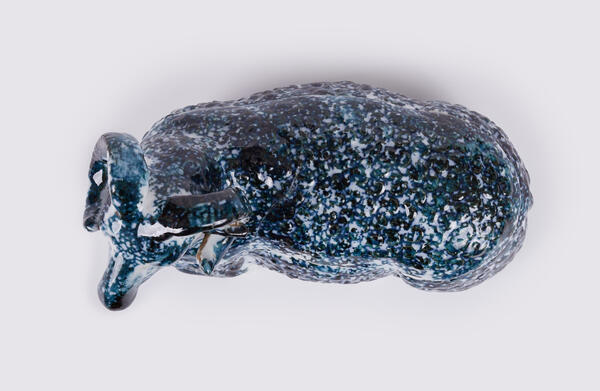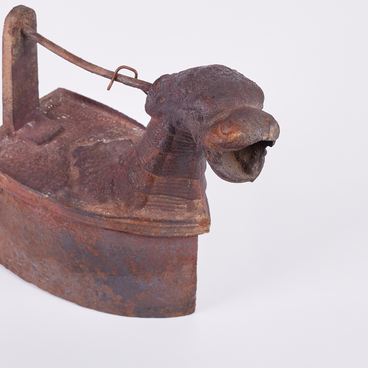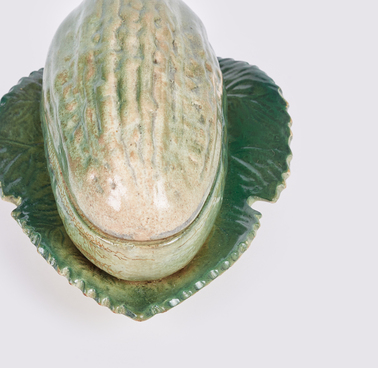The “Ram” butter dish, presented in the exhibition of the Zheleznodorozhny Local Lore Museum, was produced by the Partnership for the Production of Porcelain, Earthenware and Majolica Products of M.S. Kuznetsov — one of the largest porcelain and earthenware production facilities of the Russian Empire of the late 19th — early 20th centuries. The manufactory was founded on September 29, 1887, by the Russian industrialist and entrepreneur Matvey Sidorovich Kuznetsov and existed until 1917 when most enterprises in the country were nationalized.
At the end of the 19th century, a “naturalism” trend emerged in the art of ceramics. Unique butter dishes in the shape of animals are only a small part of what was produced in this style at the Kuznetsov manufactories at the turn of the 20th century. “Rams” and “ducks” were the most sought-after. Over the past century, many copies and forgeries have appeared, but a real “ram” can be identified by the Kuznetsov blue mark. Peculiar-looking porcelain objects in the form of animals, vegetables and fruits were very widely represented in the collection of the partnership; in the catalog, there are 30 porcelain and 61 faience butter dishes. The butter dishes were used not only to store butter but also melt it so that it could be served in the liquid form on the table with blini during the Maslenitsa festivities.
The
“Ram” is one of the most common types of butter dishes. Its large volume and
elongated shape make it easy to be used as a box. The butter dish consists of
two parts: the upper back and head of the animal form the lid, and the body is
a storage container. The butter dish is white on the inside and dark blue with
a greenish tint on the outside, with a relief texture imitating curly wool. The
bottom is white, with a clearly visible blue mark of the Kuznetsov Partnership.
It was in these butter dishes that Moscow housewives preferred to serve fresh
butter to the tea table. In the homes of nobles and wealthy townspeople, such
butter dishes were used not only as table decor but also as toys to amuse the
children.

